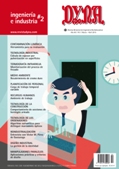TECHNIQUES AIMED AT REDUCING EMISSIONS IN THE ENERGY UTILIZATION BIOMASS
Keywords:
biomasa, pirolisis, carbón activo, residuos agrícolas, contaminantes inorgánicos, biomass, pyrolysis, active carbon, agricultural wastes, inorganic pollutantsAbstract
The industrial exploitation of biomass has been gaining prominence for the last years, mainly due to fossil fuel depletion, which enhances the search of environment-friendly alternatives. Additionally, biomass explotation could be an interesting choice for creating jobs in rural areas, as well as to favour enpowerment and provide independence to developing countries. Biomass is used both industrially and at home, especially for heating and cooking facilities. On the other hand, and even though it is a cleaner energy source compared to fossil fuels, some pollutants (both organic and inorganic) might be evolved during pyrolysis or combustion of biomass. Taking into account that workers and users at home can be exposed to these pollutants, their control is a considerable concern. However, there are no policies related to indoor atmospheric control. There are plenty of techniques to control pollution when it comes to biomass use. Depending on the stage at which they are applied, they could be classified as "pre" and "post" treatments. In the first case, these techniques could consist on the use of cleaner biomass without reducing energy efficiency. In the second place, a good example is the use of active carbon filters that could retain the evolved pollutants. The aim of this work was to study two control techniques in order to avoid pollution caused by the emission of toxic compounds during the pyrolysis of biomass. For this purpose, the dilution of biomass, by blending it with another biomass (as pre-treatment) and the use of an active carbon filter (as post-treatment) were investigated. As a conclusion, the effectiveness of both techniques was proved, advising the use of combined treatments in order to obtain additive or synergic results.Downloads
Published
2015-03-01
Issue
Section
ARTICULOS

